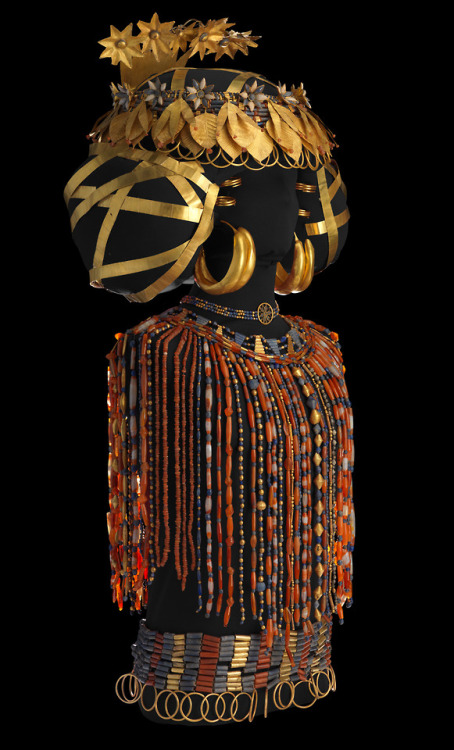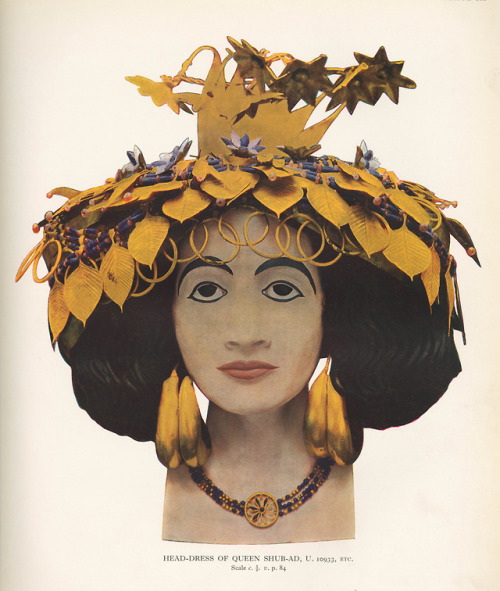spiritsdancinginthenight:Queen Puabi’s Headdress and Beaded Cape Early Dynastic III, 2550-2450 B.C.E
spiritsdancinginthenight:Queen Puabi’s Headdress and Beaded Cape Early Dynastic III, 2550-2450 B.C.E. Royal Cemetery, Ur (modern day Iraq).“Queen Puabi’s headdress, beaded cape and jewelry, all ca. 2550 BCE (includes comb, hair rings, wreaths, hair ribbons, and earrings) of gold, lapis lazuli, and carnelian, was excavated in the early 1930s by a joint Penn Museum/British Museum team, at the ancient Mesopotamian Royal Cemetery of Ur, in what is now Iraq. The Queen went to her final resting place accompanied by several hundred female attendants, several guards, and a rich cache of objects. Puabi’s headdress included a frontlet with beads and pendant gold rings, two wreaths with poplar leaves, a wreath with willow leaves and inlaid rosettes, and a string of lapis lazuli beads. The comb would have been inserted in her hair at the back, leaving the flowers floating over her head. Her beaded cape and jewelry includes pins of gold and lapis lazuli, a gold, lapis lazuli and carnelian garter, lapis lazuli and carnelian cuff, and gold finger rings. Queen Puabi’s reconstructed headdress and cape are on view in the Penn Museum’s exhibition Iraq’s Ancient Past: Rediscovering Ur’s Royal Cemetery.”Puabi (Akkadian: “Word of my father”), also called Shubad due to a misinterpretation by Sir Charles Leonard Woolley, was an important person in the Sumerian city of Ur, during the First Dynasty of Ur (c. 2600 BC). Commonly labeled as a “queen”, her status is somewhat in dispute. Several cylinder seals in her tomb identify her by the title “nin” or “eresh”, a Sumerian word which can denote a queen or a priestess. The fact that Puabi, herself a Semitic Akkadian, was an important figure among Sumerians, indicates a high degree of cultural exchange and influence between the ancient Sumerians and their Semitic neighbors. © Penn Museum& Wikipedia -- source link
Tumblr Blog : spiritsdancinginthenight.tumblr.com


